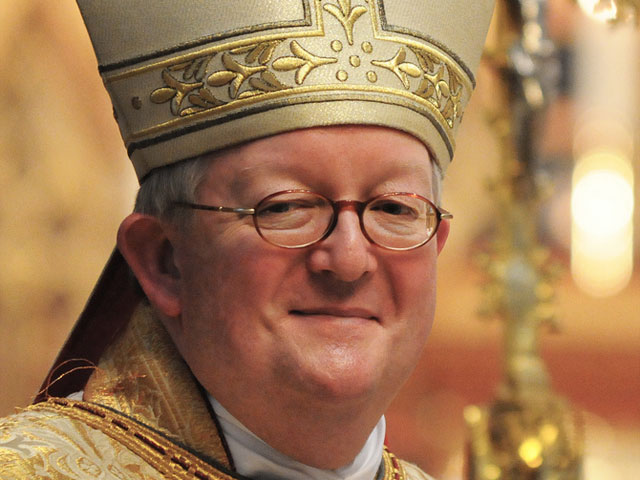For reasons probably more associated with my age than anything else, the old Dr. Hook song, “(On the) Cover of the Rolling Stone,” which equated placement on the front of rock’s top magazine with true accomplishment in life, ran through my mind when I first learned that Pope Francis would get pride-of-place in the magazine’s Feb. 13 issue. The comparisons with Dr. Hook (who eventually got their cover) end there, however. This piece is pretty much an early Valentine to its subject.
Mark Binelli, a “novelist and contributing editor to Rolling Stone,” as his bio notes, got the nod to proffer a pontifical profile, and as might be expected from a truly non-conservative publication, Francis comes off closer to Dorothy Day than to George Weigel:
Up close, Pope Francis, the 266th vicar of Jesus Christ on Earth, a man whose obvious humility, empathy and, above all, devotion to the economically disenfranchised has come to feel perfectly suited to our times, looks stouter than on television. Having famously dispensed with the more flamboyant pontifical accessories, he’s also surprisingly stylish, today wearing a double-breasted white overcoat, white scarf and slightly creamier cassock, all impeccably tailored.
The topic of Francis’ catechesis, or teaching, is Judgment Day, though, true to form, he does not try to conjure images of fire and brimstone. His predecessor, Benedict XVI, speaking on the topic, once said, “Today we are used to thinking: ‘What is sin? God is great, he understands us, so sin does not count; in the end God will be good toward all.’ It’s a nice hope. But there is justice, and there is real blame.”
Francis, 77, by contrast, implores the crowd to think of the prospect of meeting one’s maker as something to look forward to, like a wedding, where Jesus and all of the saints in heaven will be waiting with open arms. He looks up from his script twice to repeat key lines: avanti senza paura (“go without fear”) and che quel giudizio finale è già in atto (“the final judgment is already happening”). Coming from this pope, the latter point sounds more like a friendly reminder. His voice is disarmingly gentle, even when amplified over a vast public square.,
Yes, sports fans, time for another long, slobbering kiss from a media outlet inclined to see Papa Francesco as their own theological Rorschach test, an ideological ink-blot that shows what they want to see.
There are, approximately, 7,600 words in this account — I knocked off about 125 words from what Microsoft Word tallied because of links and other bits Rolling Stone inserted in the text — and it would take a post of almost the same length to diagram and dissect the article fully. For starters, suffice it to say that Binelli wasn’t a fan of Francis’ predecessor:
it’s hard to imagine a worse choice to meet the particular challenges facing the Catholic Church over the past decade than Cardinal Joseph Ratzinger. Prior to being named pope in 2005, Ratzinger had served the role as chief doctrinal enforcer for his predecessor, the beloved, but also quite reactionary John Paul II. In his fight against the liberalizing efforts of the Second Vatican Council, JPII, as he’s known around the Vatican, cracked down on progressive Catholic groups like the Jesuits, while welcoming controversial hypertraditionalists Opus Dei into the Church’s mainstream. Lay “numerary” members of the latter group take vows of celibacy and practice corporal mortification: whipping themselves or wearing a cilice, a spiked metal chain bound to the thigh as a penance and a reminder of Jesus’ suffering.
A 1986 letter issued by Ratzinger, “On the Pastoral Care of Homosexual Persons” (also known as Homosexualitatis Problema), described homosexuality as an “intrinsic moral evil.” Leading proponents of liberation theology, an explosive, Marxist-tinged Catholic movement that swept through Latin America in the Seventies and Eighties, were marginalized by Ratzinger’s office and seen as heretics. At the same time, his team responded to the endless pedophilia revelations that wracked the Church in recent decades with “denial, legalistic foot-dragging and outright obstruction,” to quote an exhaustive 2010 New York Times investigation.
One might struggle to find a similar pair of paragraphs in which so much is conflated, from what members of Opus Dei wear versus the Jesuits’ alleged progressivism to a 28-year-old Ratzinger epistle versus the pedophilia crisis.
One is tempted to ask, “And the point is?”, but the point is all-too-clear: Benedict bad, Francis fab.
Binelli labors mightily to link the conservatism of some American Catholics (former Sen. Rick Santorum and Kansas Gov. Sam Brownback, as well as “Newt Gingrich, Paul Ryan, Marco Rubio and Jeb Bush”) with potential opposition to Francis-the-liberalizing-pontiff. Except the writer slams into, well, an inconvenient truth:
This is a common retort among conservative Catholics about Pope Francis: You guys in the secular liberal media just aren’t listening. Santorum has insisted the pope’s comments on gays and abortion were taken out of context. New York Cardinal Timothy Dolan, a conservative who had made a number of papal long lists in March, also wasted no time in translating Francis’ message, telling CBS This Morning, “Pope Francis would be the first to say, ‘My job isn’t to change church teaching. My job is to present it as clearly as possible. …While certain acts may be wrong … we will always love and respect the person and treat the person with dignity.'”
While much of this sounds like wishful thinking, they also have a point: The pope’s tonal changes don’t necessarily signal a wild swing from tradition. Francis has ruled out the ordination of women, for example, and he still considers abortion an evil.
Plus, we ignored most of what he actually said about homosexuality and the priesthood. Oh well. Whatever. Never mind.
There’s tons more, and, yes, a fair amount of good reporting about Francis’ years in Argentina and his Church experiences there, as well as how he earned the ire of the country’s leaders in the past decade. There’s much, too, about the human side of Francis, which certainly is more approachable than Benedict perhaps was. But the Roman Catholic Church is still the Roman Catholic Church, and even a nice pontiff who kisses babies isn’t going to make sweeping doctrinal changes that the elites might desire, even if his visage graces their magazine covers.
PERSONAL NOTE: As I return to the newsroom next week, this is my last GetReligion post — at least for a while. I am grateful for the opportunity of participating in this great conversation, which I hope continues long into the future. Thanks for allowing this writer to share the ride for a short time.











